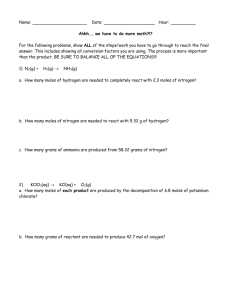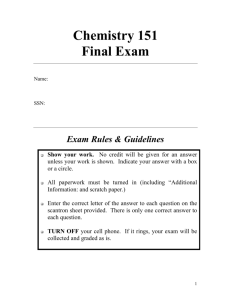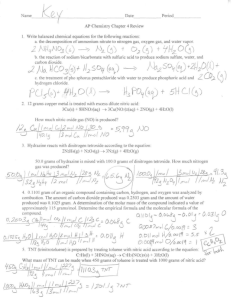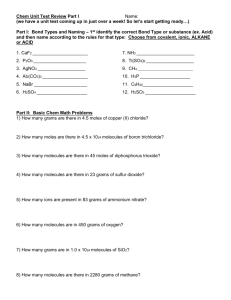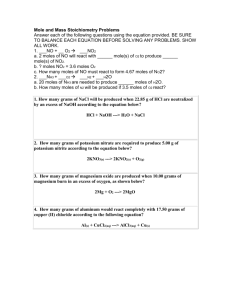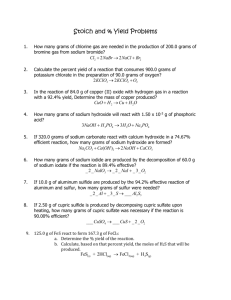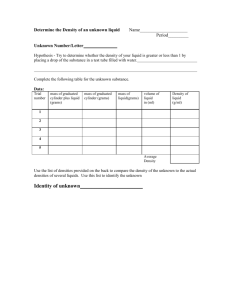Chemical Reactions
advertisement
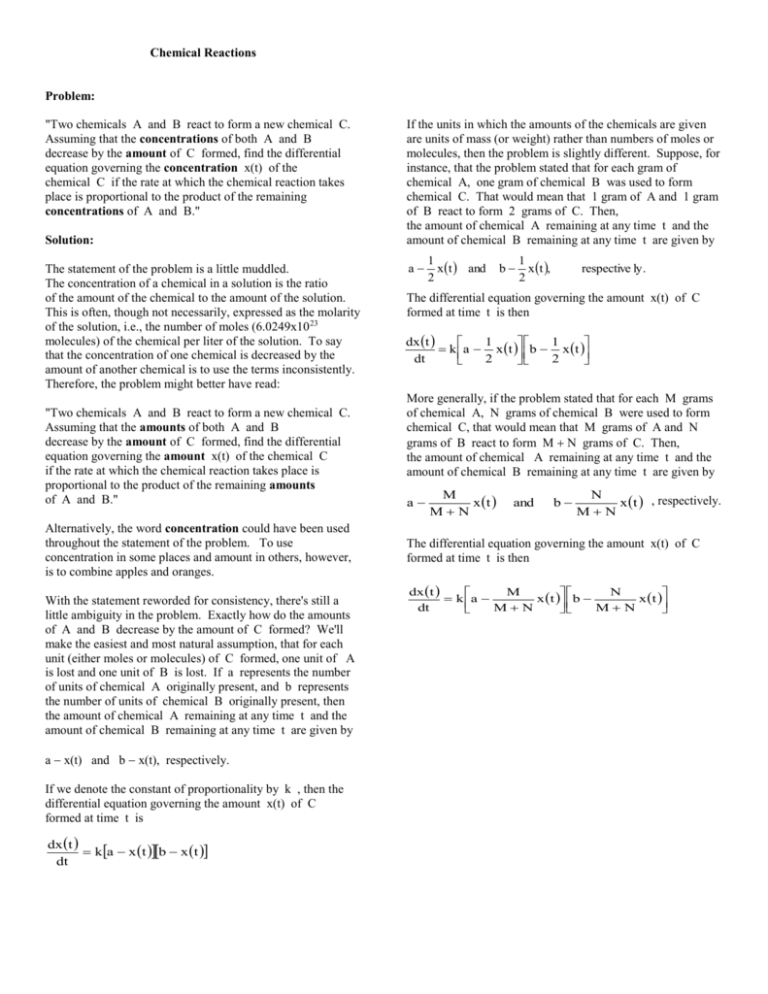
Chemical Reactions Problem: "Two chemicals A and B react to form a new chemical C. Assuming that the concentrations of both A and B decrease by the amount of C formed, find the differential equation governing the concentration x(t) of the chemical C if the rate at which the chemical reaction takes place is proportional to the product of the remaining concentrations of A and B." Solution: The statement of the problem is a little muddled. The concentration of a chemical in a solution is the ratio of the amount of the chemical to the amount of the solution. This is often, though not necessarily, expressed as the molarity of the solution, i.e., the number of moles (6.0249x10 23 molecules) of the chemical per liter of the solution. To say that the concentration of one chemical is decreased by the amount of another chemical is to use the terms inconsistently. Therefore, the problem might better have read: "Two chemicals A and B react to form a new chemical C. Assuming that the amounts of both A and B decrease by the amount of C formed, find the differential equation governing the amount x(t) of the chemical C if the rate at which the chemical reaction takes place is proportional to the product of the remaining amounts of A and B." Alternatively, the word concentration could have been used throughout the statement of the problem. To use concentration in some places and amount in others, however, is to combine apples and oranges. With the statement reworded for consistency, there's still a little ambiguity in the problem. Exactly how do the amounts of A and B decrease by the amount of C formed? We'll make the easiest and most natural assumption, that for each unit (either moles or molecules) of C formed, one unit of A is lost and one unit of B is lost. If a represents the number of units of chemical A originally present, and b represents the number of units of chemical B originally present, then the amount of chemical A remaining at any time t and the amount of chemical B remaining at any time t are given by a x(t) and b x(t), respectively. If we denote the constant of proportionality by k , then the differential equation governing the amount x(t) of C formed at time t is dx t ka x t b x t dt If the units in which the amounts of the chemicals are given are units of mass (or weight) rather than numbers of moles or molecules, then the problem is slightly different. Suppose, for instance, that the problem stated that for each gram of chemical A, one gram of chemical B was used to form chemical C. That would mean that 1 gram of A and 1 gram of B react to form 2 grams of C. Then, the amount of chemical A remaining at any time t and the amount of chemical B remaining at any time t are given by a 1 x t and 2 b 1 x t , 2 respective ly . The differential equation governing the amount x(t) of C formed at time t is then dx t 1 1 k a x t b x t dt 2 2 More generally, if the problem stated that for each M grams of chemical A, N grams of chemical B were used to form chemical C, that would mean that M grams of A and N grams of B react to form M N grams of C. Then, the amount of chemical A remaining at any time t and the amount of chemical B remaining at any time t are given by a M x t MN and b N x t , respectively. MN The differential equation governing the amount x(t) of C formed at time t is then dx t M N k a x t b x t dt M N M N

